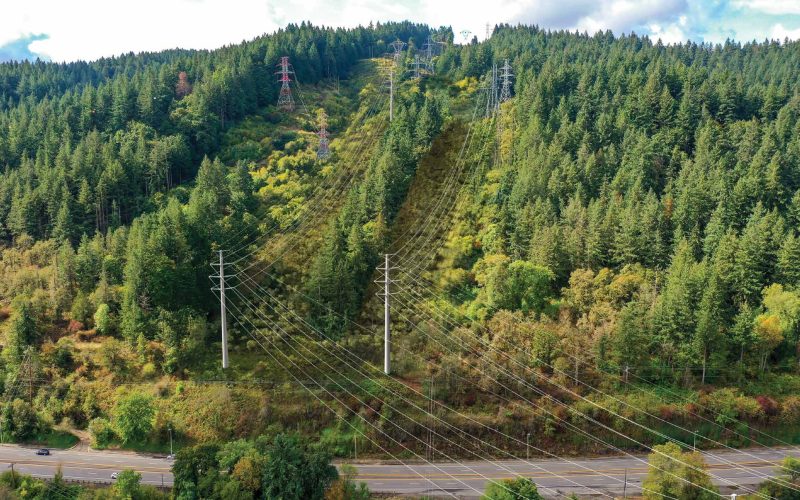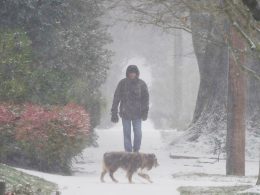Angus Duncan
Duncan previously chaired the Oregon Global Warming Commission and the Northwest Conservation and Power Planning Council. He resides in central Oregon and Portland.
Power lines, Portland General Electric, and five acres of Douglas Fir at the north end of Forest Park are all involved in a land use decision that is currently undergoing a minor but significant drama.
The wildfires that erupted in Los Angeles, destroying entire neighborhoods, killing over two dozen people, and inflicting billions of dollars in damages, are indirectly linked to that decision. It also brings up memories of the 2020 Oregon flames, which destroyed a million acres of grasslands and woodlands, killed at least nine people, and destroyed entire villages. The acreage of wildfires nearly doubled again in just four years.
The argument about the transmission line through Forest Park must be framed within the larger discussion about the least flawed approach to combating climate change.
The biggest electric company in Oregon, PGE, is planning to upgrade its current power line in an existing utility right-of-way. In order to accomplish this, it makes the case that about 370 huge Douglas fir trees on five acres of Portland’s well-liked Forest Park must be removed. In order to provide enough clean electricity to the greater Portland area and to be more dependable in a world of increased climate risk, PGE’s proposal is a component of a bigger transmission system rebuild throughout the western United States.
Neighbors, environmentalists, and the city’s Permitting and Development Office have strongly objected to the idea of removing so many trees, and the office is suggesting that the necessary permit be refused.
The battle for land usage forces us to make difficult trade-offs. Climate change is caused by carbon from burning fossil fuels in power plants and car engines. Making the switch to solar and wind power reduces climate risk, particularly wildfire risk. It will take both new and improved transmission lines over numerous prairie and forestlands to connect Portland to new wind and solar power.
Impacts on communal, cultural, and ecological values should be avoided wherever possible. However, a frustrating reality of our climate-altered environment is that we must make these trade-offs when we can.
This post is not an attempt to support PGE’s decisions or judgment in choosing this transmission link. For the most of my career, I have been criticizing utilities for decisions that I believe are environmentally shortsighted. However, I don’t think anyone will be able to discover a way through densely populated urban areas without affecting parks, roads, homes, or businesses.
If we are unable to come up with fair compromises between the demands of a more robust and clean electrical infrastructure and the trees in Forest Park, we should be concerned. It is vital for both parties to make thoughtful trade-offs.
Think about the more than 370 Douglas Firs that would have to give way in order to accommodate this transmission upgrade. The Doug Fir mortality that Oregon woods will see from disease and destructive fires if climate change is not stopped and reversed is something I will regret more than the loss of those trees.
More pernicious, Oregon State foresters classify Doug Fir forests on the west half of the state as being at increased risk because to a vapor pressure deficit. Particularly during drought conditions, but also during regular seasonal rains and saturated soils, this is when the air gets warmer and drier. The tree is stressed by the low humidity, which reduces its resilience to insects, disease, and fire.
Because older stands on both sides of the Cascades store enormous amounts of carbon and provide ecological health for numerous species, protecting them should be our top forestry goal. We must be willing to make trade-offs between community values and the necessity of protecting power lines from wildfire if less important tree stands are sacrificed for a quicker decarbonization of the electricity system. Actions for mitigation must be carefully planned.
Pushing back against these trade-offs is a surefire way to maintain a coal- and gas-based power system as well as vehicle emissions from gasoline and diesel. It keeps climate change from slowing down and getting worse.
I implore the city, Forest Park defenders, and PGE to come together and look for solutions that would best safeguard Oregon forests and related ecosystems from the climatic threats that currently threaten them. If future PGE projects attempt to get even more invasive access through Forest Park, this discussion becomes even more crucial.
Although neither side will win every argument, the outcome of such a rational debate will be advantageous for our future as a whole.










